A pallet truck takes the stacks of cured hides into storage.
Hides
The calves’ hides are taken to a special processing plant where they are assessed based on their quality and their weight. These two factors combined allow the hide to be classified. The classification process requires a lot of expertise and is quite time-consuming.
Preservation & salt curing
Holders

Once the hides have been classified, they are grouped together according to type and weight and hung in the storage area called the ‘holders’. Now the preservation process can begin, which produces semi-finished products for customers in sectors such as the leather industry.
Preservation
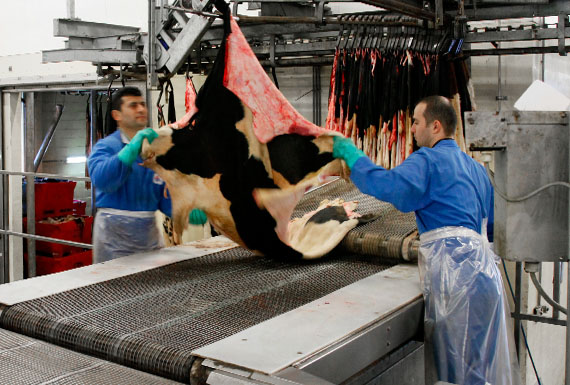
From the holders, the hides are transferred to the preservation department. They lie on a conveyor belt with the hair side down.
Salt curing
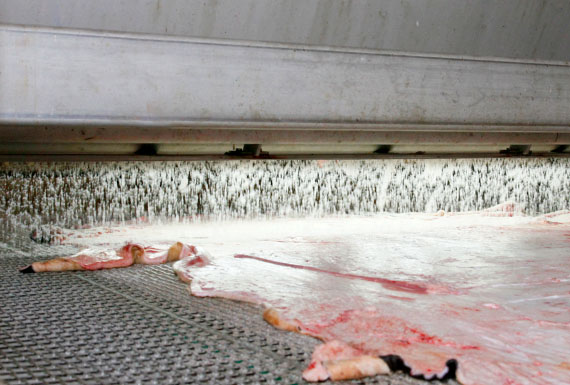
Travelling on a conveyor belt, the hides pass under a salt funnel. They are stored in stacks in a climate-controlled environment for two weeks, after which the preservation process is complete.
Pallet trucks
Desalting, weighing and stacking
Desalting
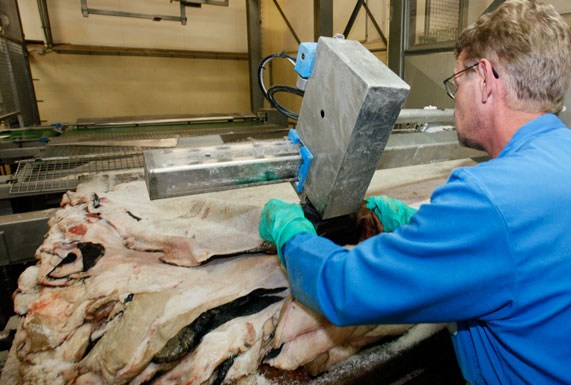
After 14 days in storage, the hides are placed in the so-called desalting machine. This removes the excess salt.
Weighing
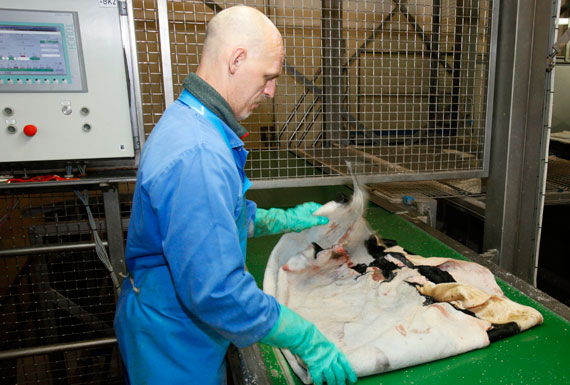
Here, the hides are folded and weighed once more.
Stacking
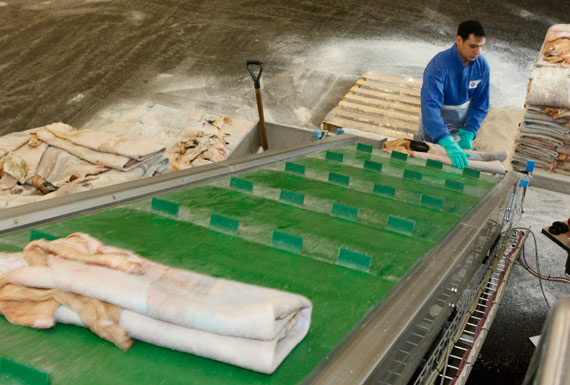
The folded hides travel down a conveyor and are stacked onto pallets again. The hides are now ready to leave the factory as semi-finished products.
Container
The hides are loaded into the container per pallet. They will be taken to tanneries either in Europe or the Middle East. Calf’s leather is in very high demand in the automotive industry, furniture manufacturing, shoe manufacturing and other sectors where leather is used.
This is the end of the tour Skins. Choose another link in the chain or use the red arrow on the right to navigate back to the floor plan.